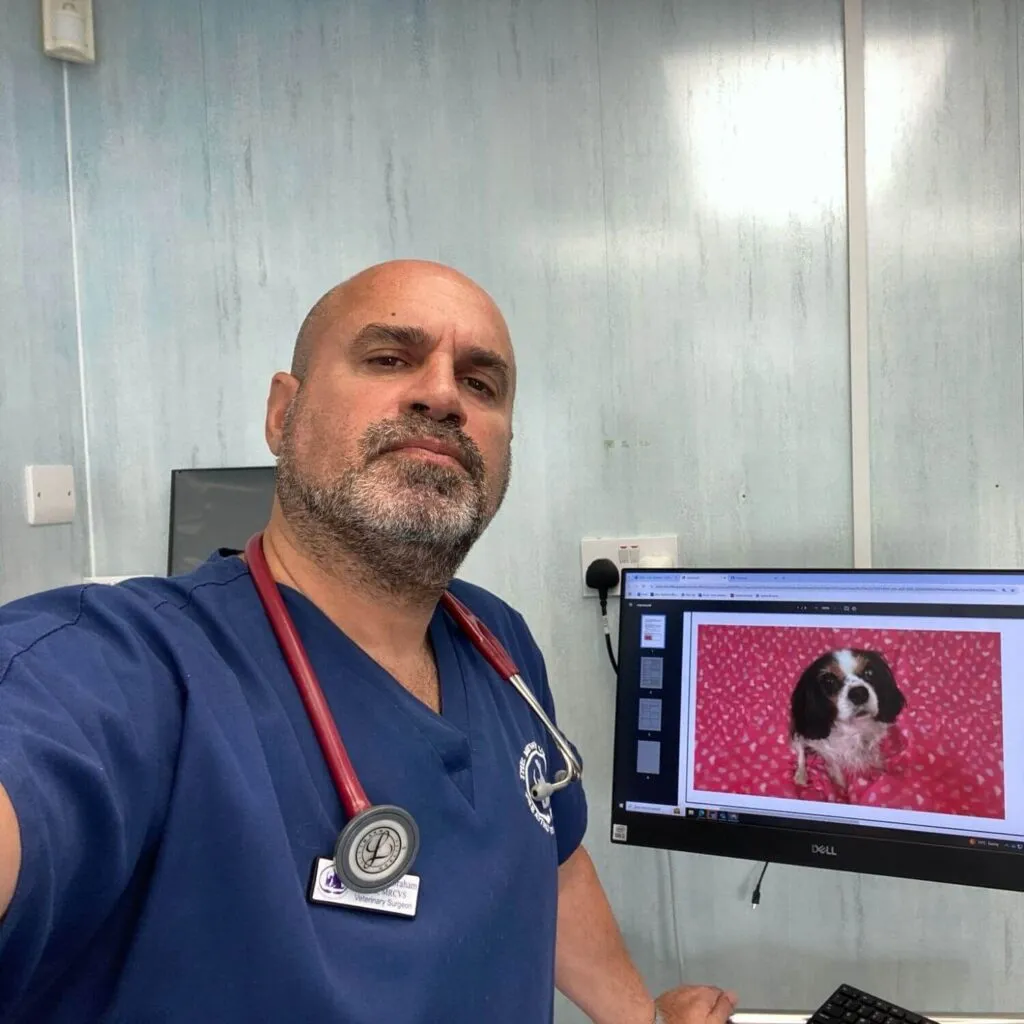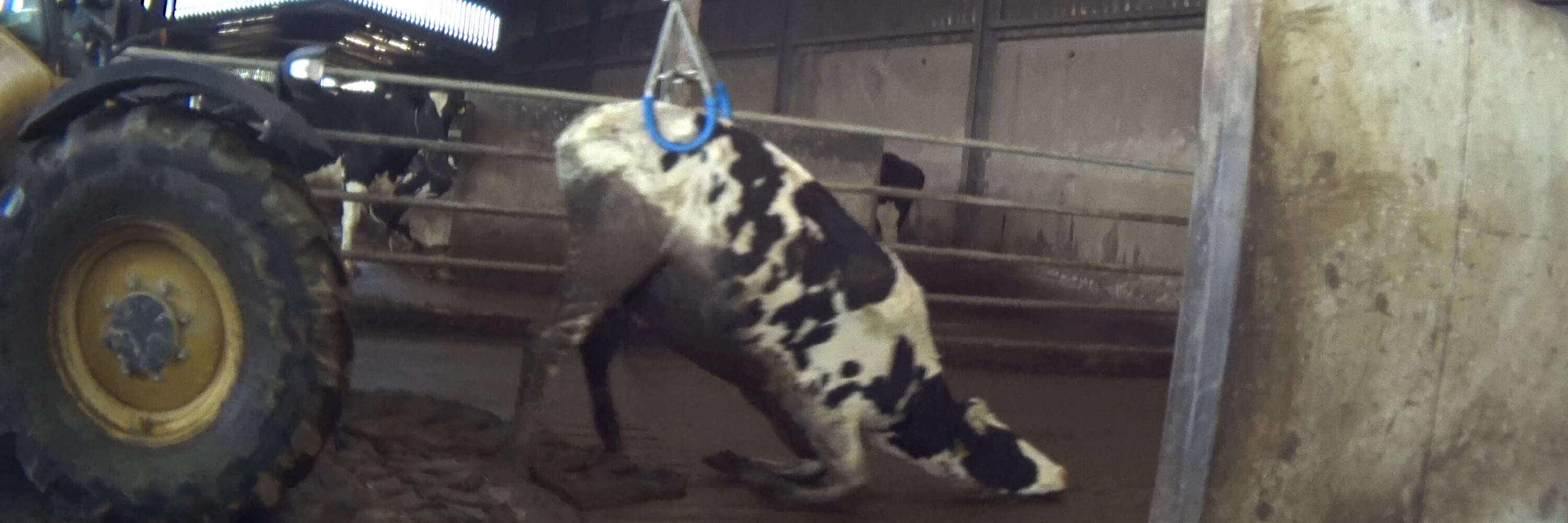
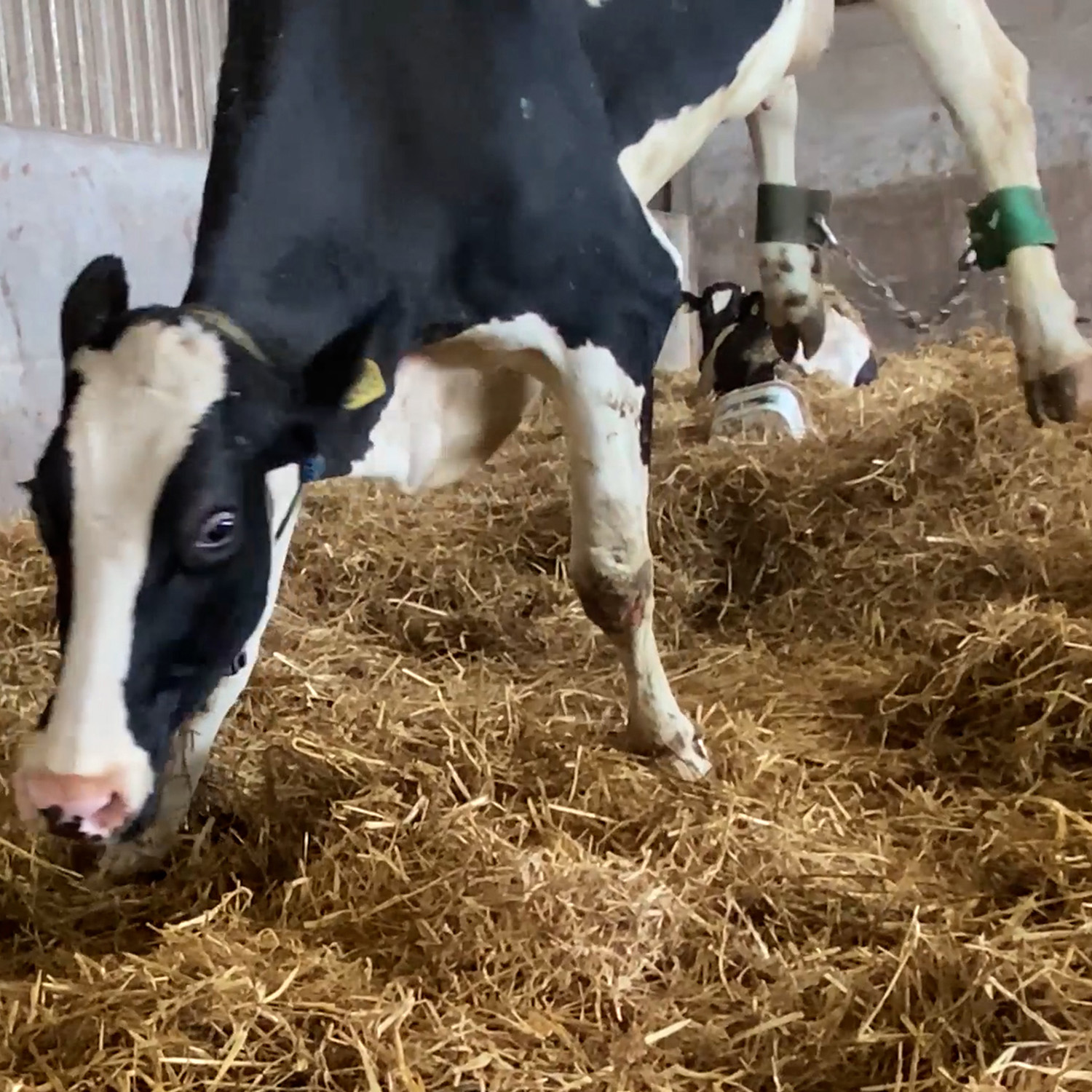
Dairy’s Lameness Epidemic in the UK

From the moment she is born, a cow in the dairy industry is treated like a machine, not a living and feeling being.
Her short life is full of suffering. Regardless of how she is raised, she will inevitably be subjected to the painful cycle of being forcibly impregnated and torn away from her calves, until she is no longer able to withstand this physically demanding process and is slaughtered at a young age. These truths are an inescapable reality of commercial dairy production in the UK.
For many cows, their suffering doesn’t end there. A growing number of them spend their days confined in small sheds with little or no access to the outdoors – a far cry from the images painted by the dairy industry of cows grazing in luscious green pastures.
This is due to the increasing popularity of so-called ‘zero-graze systems’ in the UK dairy industry. Following the example of US industrial farms, these systems deny cows their natural behaviour of grazing and keep them imprisoned indoors for their entire lives.
Due to these unnatural conditions, many cows develop painful medical conditions. These most commonly include mastitis – a painful bacterial infection which causes the cow’s udder to become inflamed – and lameness.
The latter is widely considered to be one of the most pressing and common welfare issues on dairy farms. But what exactly is lameness and how is it caused?
What is Lameness?
Lameness is when a cow struggles to walk, often because they have a foot or leg condition or injury.
Lameness causes severe pain and prolonged suffering for cows, and can prevent them from walking or even standing up.
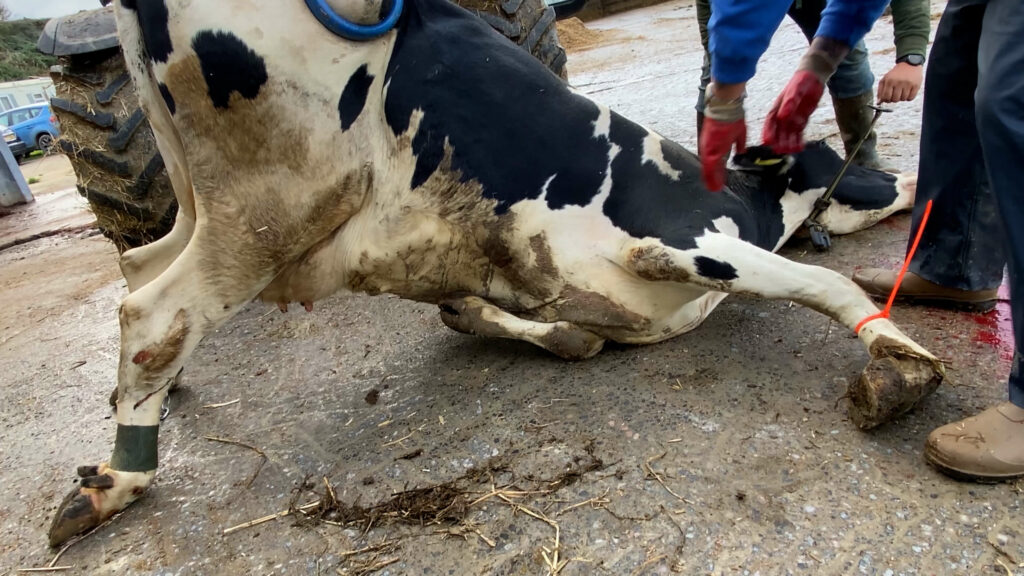
The problem of lameness is widespread. According to recent estimates, up to 30% of cows in the UK dairy industry suffer from lameness. This shocking statistic suggests that there is an underlying problem in the way the dairy industry breeds and raises cows.
Why Do Cows In The Dairy Industry Become Lame?
There are several factors that can lead to a cow developing lameness. These include:
- Being forced to stand too long on hard/poor flooring
- Poor or ineffective hoof trimming
- Infectious diseases
- Poor nutrition
According to the ‘Animal Welfare Act 2006’, farms must take measures to protect animals from ‘unnecessary suffering’.
This includes protecting animals from pain, suffering, injury and disease, as well as providing them with a suitable environment and diet and allowing them to exhibit normal behaviours.
The dairy industry is also required to provide appropriate care for cows who become lame and seek veterinary advice as soon as possible.
However, our investigations show that these rules are consistently being broken on dairy farms across the UK.
Animal Equality has investigated four dairy farms in the UK. We found animal suffering, illegality and/or abuse in every single one.
Neglect on a Welsh Dairy Farm: Our Latest Investigation
In February 2021 Animal Equality released a shocking investigation inside a Welsh dairy farm. Our findings were shown to millions of viewers on BBC One’s Panorama, and left the public shocked and outraged. The farm at the time of filming was Red Tractor certified.
We discovered widespread lameness, as well as unlawful treatment and handling of lame and sick cows.
Throughout our investigation, violence towards sick and lame cows was constant and deliberate. Cows were routinely kicked and hit in the face or stomach when they could not move or walk. Their tails were regularly twisted to make them stand – an act that causes them excruciating pain.
One cow, known as number 209, could no longer hold her own weight and collapsed in the milking stall. To get her to stand, the workers forcefully kicked her in the stomach and back. The trapped cow was eventually dragged out by her tail while her legs were kicked underneath her.
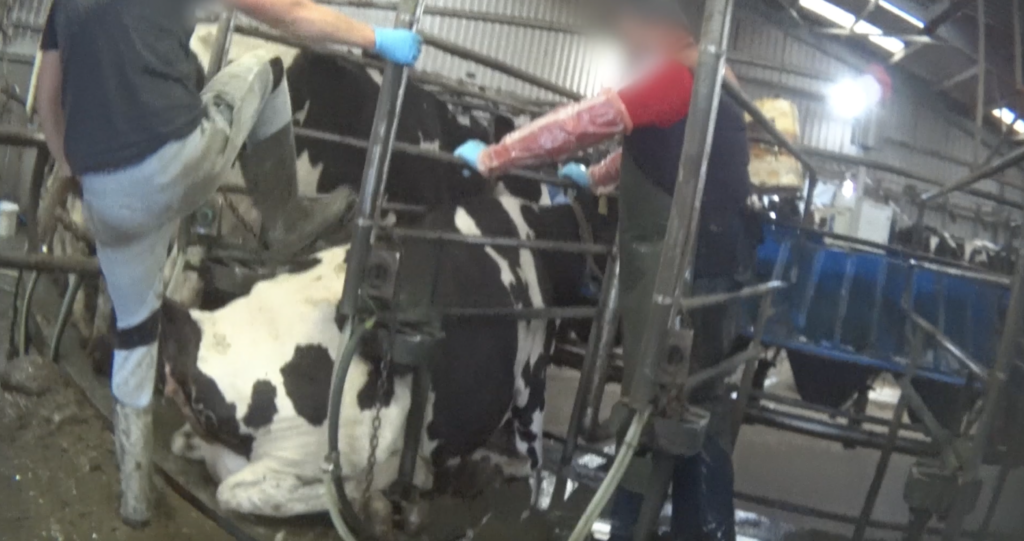
Another – referred to as 440204 – had just given birth and collapsed in a doorway. In response, one worker forcefully twisted her tail while another kicked her in the udders.
After several attempts, she eventually stood up, but then moments later she collapsed again.
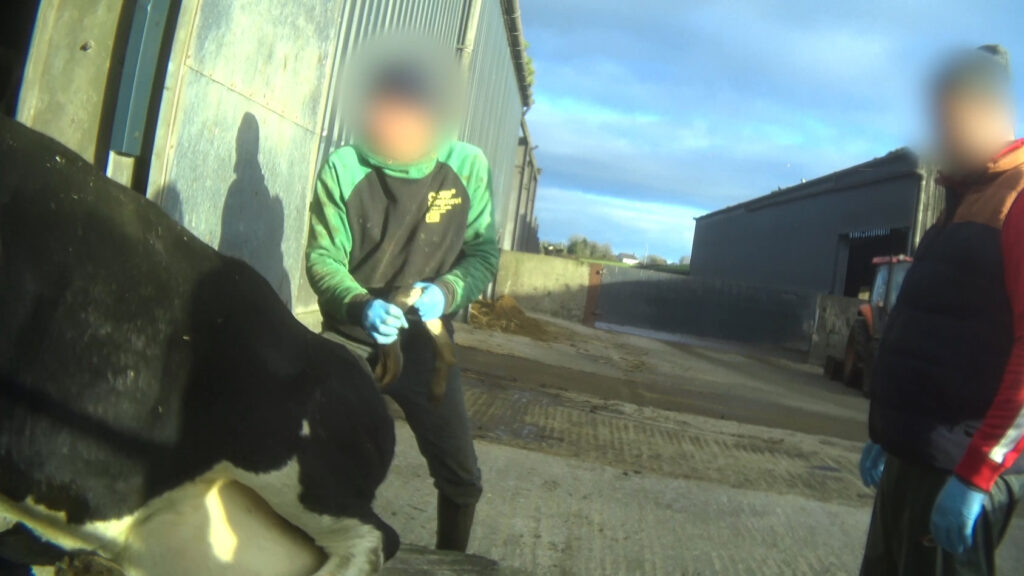
Dairy’s Lameness Epidemic
Sadly, what happened to cows 209 and 440204 are not isolated incidents. Lameness is widespread in the UK dairy industry.
Shockingly, three out of every 10 cows suffer from lameness. With 2.6 million cows exploited for their milk in the UK annually, this means that hundreds of thousands of cows are being left to suffer in silence every year.
It would be unusual to find a dairy herd without any lameness.
Roger Blowey, Gloucestershire-based farm vet, speaking to BBC Panorama
And the problem is only getting worse.
Veterinary Professor Andrew Knight stated in our latest report – carried out in collaboration with The Animal Law Foundation – that selectively breeding cows to increase milk production is putting their immune systems and fertility at risk. This in turn increases their risk of lameness caused by infectious diseases and poor health.
Lameness is one of the most important animal welfare problems for cows farmed for dairy. It’s also a key economic problem for farmers, resulting in decreased mobility, feeding time, and milk yields.
Professor Andrew Knight, Founding Director of Centre for Animal Welfare, University of Winchester
What You Can Do To Help Cows
You can help cows today by opting for plant-based alternatives to dairy products. One in three Brits are reported to be consuming dairy-free milk on a regular basis, and thousands more took to Twitter to declare that they were dropping dairy for good after seeing our investigative footage. With our supermarket shelves overflowing with plant-based milk, cheese and yoghurt alternatives, ditching dairy has never been so easy!
As consumers, we hold the power.

Protect cows and calves
Every day mother cows are separated from their newborn calves, just so milk can appear on the shelves of supermarkets. Protect cows by choosing plant-based dairy alternatives.
At the same time, as constituents, we can call on our MPs to change the system from within.
While laws clearly state that lameness is unacceptable, this problem persists on a massive scale. Widespread lameness on dairy farms is a clear example of how when animal protection laws are not properly enforced, farmed animals are at even greater risk of prolonged and unnecessary suffering.
The laws exist to prevent lameness, but these laws are being deliberately flouted by farms up and down the UK. Animal Equality is urging the UK Government to put an end to this widespread illegality by introducing stricter and more regular inspections inside farms and slaughterhouses.
Will you take action to protect cows today?
Recommended
